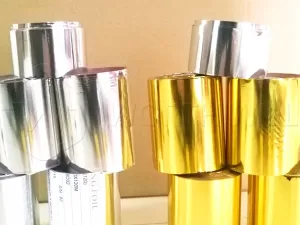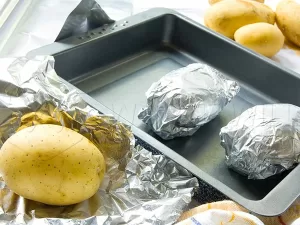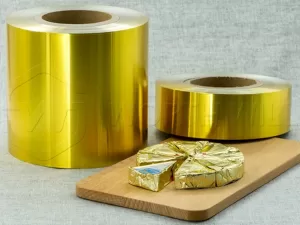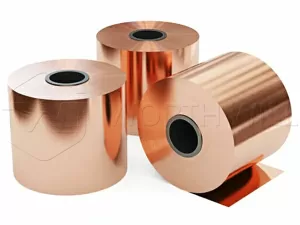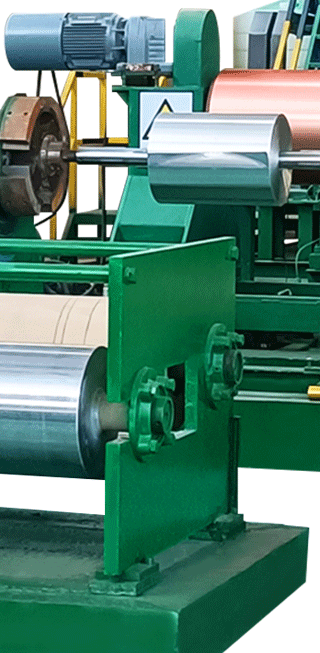Coated Aluminum Foil
- Home
- Coated Aluminum Foil
Specific coating on aluminum foil depends on the intended application and the desired properties required for that particular use. Coated Aluminum Foil can provide benefits such as heat sealing, insulation, moisture resistance, barrier properties, or decorative finishes.


Coated aluminum foil is a type of aluminum foil that has a surface treatment or coating to improve its performance. The coating may provide heat resistance, corrosion protection, color, or non-stick properties. This makes it a perfect material for packaging, insulation, and industrial applications.
Specification of Coated Aluminum Foil
Coated aluminum foil is available in a range of specifications depending on the end use:
-
Thickness: 0.006 mm to 0.2 mm
-
Width: 100 mm to 1600 mm
-
Alloy: 8011, 1235, 3003, 8079
-
Temper: Soft (O), Half Hard (H22, H24)
-
Coating types: Color coating, epoxy, silicone, PVDF, polyester, or hydrophilic
-
Backings: Paper, film, or woven fabric
The cost can vary depending on several factors:
Such as the thickness of the foil, the type of coating used, and the supplier.
The foil price has generally competitive features, so it is an affordable option for various applications.
Classification of Coated Aluminum Foil
Coated aluminum foil can be classified by its coating type or application:
-
Color Coated Aluminum Foil – used in decoration and packaging
-
Hydrophilic Aluminum Foil – used in air conditioners
-
Non-stick Coated Aluminum Foil – for cooking and baking
-
Epoxy Coated Aluminum Foil – used in electronics and batteries
-
Heat Seal Coated Foil – for pharmaceutical blister packs
Applications
Food Packaging: Extensively used in food packaging due to its protective properties and heat resistance. It helps preserve the freshness, aroma, and quality of food products, extending their shelf life.
Cooking and Baking: The non-stick properties make it a preferred choice for cooking and baking purposes. It simplifies food preparation and ensures easy release, reducing the need for additional oils or fats.
Pharmaceutical Packaging: Playing a crucial role in pharmaceutical packaging. It provides a sterile and secure barrier, protecting medicines from moisture, oxygen, and other environmental factors.
Insulation and Heat-Sealing: Widely used for insulation purposes, such as thermal insulation in buildings and HVAC systems. It also serves as a heat-sealing material in various industries, ensuring leak-proof packaging and closures.




Advantages
- Enhanced Protection: With providing a protective layer that safeguards the contents from external elements such as moisture, light, and contaminants.
- Heat Resistance: The coating on aluminum foil enhances its heat resistance, making it suitable for applications that involve high temperatures.
- Non-Stick Properties: Certain types exhibit excellent non-stick properties, making them ideal for food preparation and cooking.
- Versatility: Available in various thicknesses, widths, and lengths, allowing for versatility in its applications. Used for packaging pharmaceuticals, food products, cosmetics, electronics, and more.
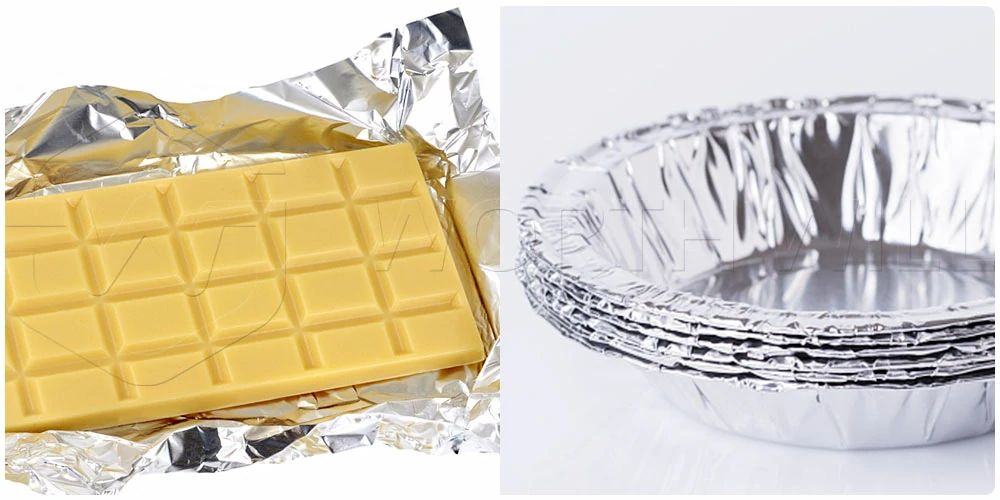
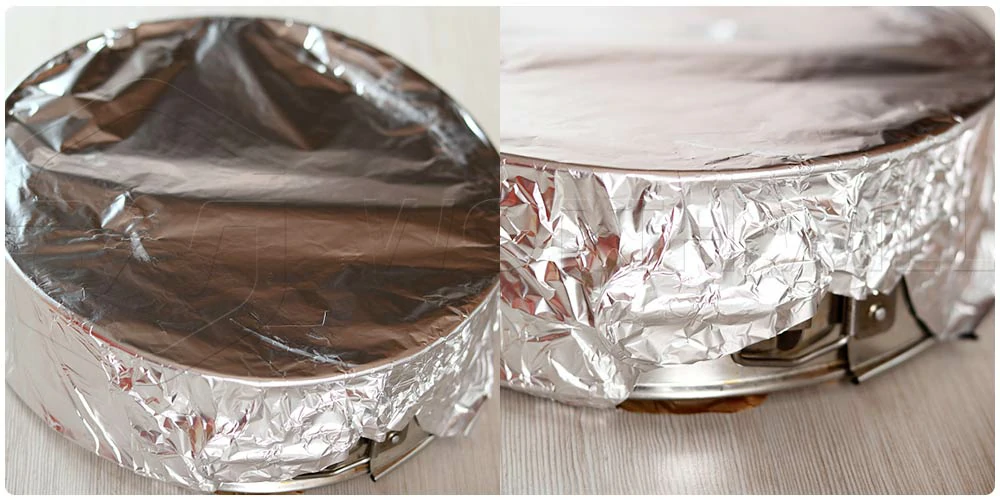
The Coating on Non-Stick Aluminum Foil
- The coating on non-stick aluminum foil is typically a food-grade material, such as polytetrafluoroethylene (PTFE), commonly known as Teflon.
- PTFE is a synthetic fluoropolymer known for its exceptional non-stick properties, chemical resistance, and high-temperature tolerance.
- The coating creates a smooth, non-stick surface on the aluminum foil, preventing food from sticking during cooking or baking.
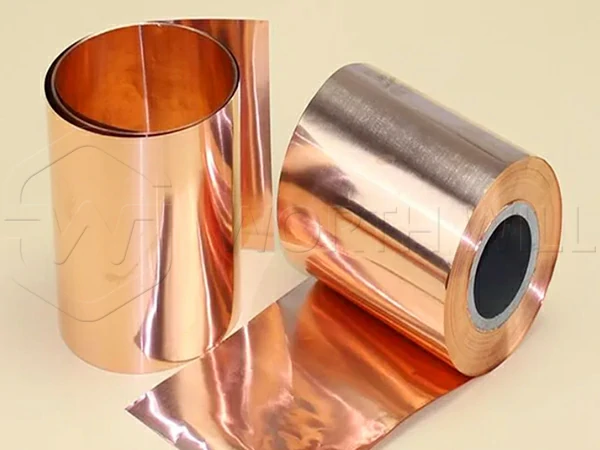
Worthwill Aluminum Supplier
When it comes to sourcing coated aluminum foil, Worthwill Aluminum Supplier is a trusted name in the industry. We offer a wide range of high-quality coated aluminum foil products that meet stringent quality standards.
With a commitment to customer satisfaction, timely delivery, and competitive pricing, we havebuilt a reputation for reliability and excellence.
Whether you require coated aluminum foil for packaging, cooking, or other applications, our team can provide tailored solutions to meet your specific needs.
Why To Choose WORTHWILL Aluminum?
With applications spanning food packaging, cooking, pharmaceuticals, insulation, and more, coated aluminum foil serves as a versatile material in various industries.
For reliable coated aluminium foil supply, consider Worthwill Aluminum Supplier, a reputable provider dedicated to delivering top-notch products and exceptional service.
Welcome to get more details about how to get aluminum foil products from our company.
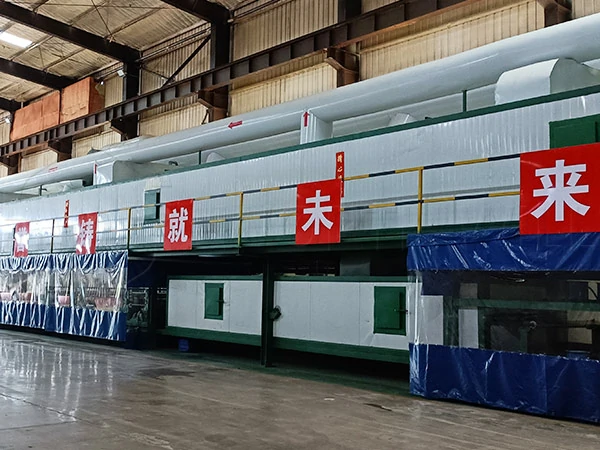
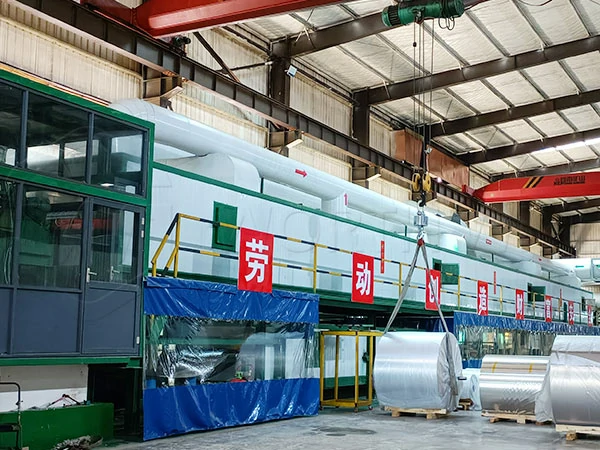
Classification of Coated Aluminum Foil
Coated aluminum foil can be classified based on the type of coating, the application, and the properties it imparts. Here are some common classifications:
-
Polymer-Coated Aluminum Foil:
- PE (Polyethylene) Coated Foil: Very common for food packaging due to its excellent moisture barrier and heat-sealable properties. It’s often used for pouches, bags, and aseptic packaging.
- PP (Polypropylene) Coated Foil: Offers good chemical resistance and can withstand higher temperatures than PE, often used in medical or pharmaceutical packaging.
- PET (Polyethylene Terephthalate) Coated Foil: Provides good strength, heat resistance, and a good barrier.
-
Lacquer-Coated Aluminum Foil:
- Heat-Seal Lacquer Coated Foil: Designed to be easily sealed to various substrates using heat. Used extensively in blister packs for pharmaceuticals, food lids, and flexible packaging.
- Corrosion-Resistant Lacquer Coated Foil: Protects the aluminum from corrosive substances, common in industrial applications or packaging aggressive products.
- Printable Lacquer Coated Foil: Allows for high-quality printing on the foil surface, important for branding and product information.
-
Non-Stick Coated Aluminum Foil: Features a special release coating (like silicone) that prevents food from sticking, popular for baking and grilling.
-
Backed or Laminated Coated Aluminum Foil: This refers to aluminum foil that has been bonded to another material (like paper or plastic film) and then often coated. This creates a multi-layered material with combined benefits.
Each type of coated aluminum foil is engineered for specific requirements, making it a critical component in many industries.
Do They Make Non-Stick Aluminum Foil?
Yes, they absolutely do make non-stick aluminum foil! This is a very popular type of coated aluminum foil found in many kitchens. It features a special food-grade silicone coating on one side, which prevents food from sticking.
Here’s how non-stick aluminum foil works and why it’s useful:
- Silicone Coating: The silicone coating creates a smooth, slick surface that food won’t adhere to, even when baked or grilled at high temperatures.
- Convenience: It makes cooking and cleanup much easier. You can line baking sheets, wrap sticky foods, or cover dishes without worrying about food getting stuck to the foil.
- Versatility: Ideal for baking cookies, roasting vegetables, grilling fish, or even making foil packet meals. The non-stick surface ensures your food slides right off.
- Identification: Most brands of non-stick aluminum foil are clearly marked, and the non-stick side is often duller or slightly different in texture. Always ensure the non-stick side is facing the food.
This specialized aluminum foil coating has become a favorite for home cooks and chefs alike due to its practical benefits.
What is Clear Aluminum Foil Called?
The term “clear aluminum foil” can be a bit misleading because aluminum foil itself is opaque (not transparent). If someone is referring to a “clear” material that looks like foil but is transparent, they are likely thinking of a plastic film with a metallic or reflective coating, or a laminated material where aluminum foil is combined with a clear plastic layer.
Here are a few possibilities for what might be perceived as “clear aluminum foil”:
- Metallized Film: This is a plastic film (like BOPP or PET) that has an extremely thin layer of aluminum vapor deposited onto it. This layer is so thin that the film retains some transparency or a “see-through” metallic sheen, unlike solid aluminum foil. It offers some barrier properties and a metallic look but is not true aluminum foil.
- Laminated Film with Clear Layers: In many flexible packaging applications, aluminum foil is laminated (bonded) between layers of clear plastic film. For example, a stand-up pouch might have an outer clear plastic layer, an inner aluminum foil layer for barrier, and another clear plastic layer for heat sealing. While the foil itself isn’t clear, the overall structure might appear somewhat translucent or have windows, allowing the product to be seen.
- Plastic Wrap with Metallic Sheen: Sometimes, plastic cling wrap can have a slight metallic appearance under certain light, but it’s not aluminum foil.
So, while there isn’t truly “clear aluminum foil,” the concept usually points to metallized films or multi-layered packaging where aluminum foil is combined with transparent plastic materials.
What is Backed Aluminum Foil?
Backed aluminum foil, also known as laminated aluminum foil, refers to aluminum foil that has been combined or bonded with another material, typically paper, plastic film, or even fabric. This process creates a composite material that harnesses the best properties of each component.
The “backing” material adds new characteristics to the aluminum foil, such as:
- Increased Strength and Durability: Paper or plastic backing makes the foil much stronger and more resistant to tearing or punctures than stand-alone foil.
- Heat Sealability: Often, the backing material is a heat-sealable polymer (like polyethylene), which allows the laminated aluminum foil to be easily sealed using heat, crucial for creating airtight packaging.
- Printability: A paper or plastic backing can provide an excellent surface for high-quality printing, allowing for vibrant graphics and product information.
- Insulation: In some industrial applications, the backing material can enhance the insulating properties of the foil.
- Chemical Resistance: The backing can protect the aluminum from corrosive contents or environments.
Common Applications of Backed Aluminum Foil:
- Food Packaging: Used for coffee bags, snack pouches, candy wrappers, and flexible packaging that requires a strong barrier against moisture, oxygen, and light.
- Pharmaceutical Packaging: Blister packs, sachets for powders or liquids, where superior barrier protection and heat sealability are essential.
- Building Insulation: As a radiant barrier, where aluminum foil is backed with kraft paper or other materials to prevent heat transfer.
- Tobacco Packaging: To maintain freshness and aroma.
Essentially, backed aluminum foil is a custom-engineered solution that combines the excellent barrier properties of aluminum foil with the structural or functional benefits of another material, creating a superior packaging or industrial solution.
The Benefits of Using Coated Aluminum Foil
The addition of a coating significantly enhances the performance of standard aluminum foil. Here are some key benefits:
- Enhanced Barrier Properties: Coatings can improve the foil’s ability to block gases (like oxygen), moisture, light, and odors, extending product shelf life.
- Heat Sealability: Many coatings are designed to be heat-sealable, allowing the foil to be easily sealed to itself or to other materials, forming airtight and tamper-evident packages.
- Chemical Resistance: Coatings can protect the aluminum from acidic or alkaline contents, making it suitable for packaging a wider range of products, including aggressive chemicals or corrosive foods.
- Non-Stick Release: As seen with non-stick aluminum foil, coatings can provide a release surface, making food preparation and cleanup easier.
- Improved Durability: Some coatings add a layer of protection, making the foil more resistant to punctures, abrasions, or tearing.
- Aesthetics and Printability: Certain coatings create a better surface for printing, allowing for vibrant designs and product information directly on the foil, enhancing brand appeal.
- Corrosion Protection: Coatings can prevent the aluminum from reacting with certain substances, preserving the integrity of both the foil and the packaged product.
These benefits highlight why coated aluminum foil is preferred over plain foil in many specialized applications.
Common Applications of Coated Aluminum Foil
The versatility of coated aluminum foil makes it indispensable across numerous industries:
- Food and Beverage Packaging:
- Coffee and tea pouches for freshness.
- Snack food bags (chips, nuts) to prevent spoilage.
- Candy wrappers and chocolate bar packaging.
- Lids for yogurt cups and other dairy products.
- Aseptic packaging for juices and long-life milk.
- Pharmaceutical and Medical Packaging:
- Blister packs for pills and capsules, offering strong moisture and oxygen barrier.
- Sachets for medical powders or creams.
- Medical device sterilization pouches.
- Cosmetics and Personal Care:
- Pouches for wet wipes, face masks, and lotions.
- Lids for cosmetic jars.
- Industrial Applications:
- Insulation materials where coated aluminum foil improves heat reflection and moisture barrier.
- Cable wrapping for electrical insulation.
- Certain automotive components.
- Household Use:
- Non-stick aluminum foil for cooking and baking.
- Foil for lining slow cookers or grills.
This wide range of applications underscores the importance of coated aluminum foil in modern manufacturing and consumer goods.
Choosing the Right Coated Aluminum Foil
When selecting coated aluminum foil for a specific purpose, several factors should be considered:
- Application: What is the intended use? Is it for food, medicine, or industrial purposes?
- Required Barrier Properties: What level of protection is needed against moisture, oxygen, or light?
- Chemical Compatibility: Will the coating react with the contents being packaged?
- Heat Sealability: Is a heat seal required, and what kind of temperature range is needed?
- Durability and Strength: Does the application require extra tear or puncture resistance?
- Printability: Are high-quality graphics necessary?
- Cost-Effectiveness: Balancing desired properties with budget.
Working with suppliers who understand your specific needs can help ensure you select the most appropriate coated aluminum foil product.
Environmental Considerations and Coated Aluminum Foil
While aluminum foil itself is highly recyclable, the presence of coatings can sometimes complicate the recycling process for coated aluminum foil.
- Separation Challenges: Some recycling facilities may struggle to separate the thin coating from the aluminum, especially if the coating is not easily removed.
- Food Contamination: As with plain foil, coated aluminum foil with significant food residue may not be accepted in all recycling streams.
- Advancements in Recycling: The industry is continually working on developing more recyclable coated aluminum foil solutions, including coatings that are more easily separated or biodegradable.
Consumers are encouraged to check with their local recycling programs for specific guidelines on how to dispose of coated aluminum foil products.

